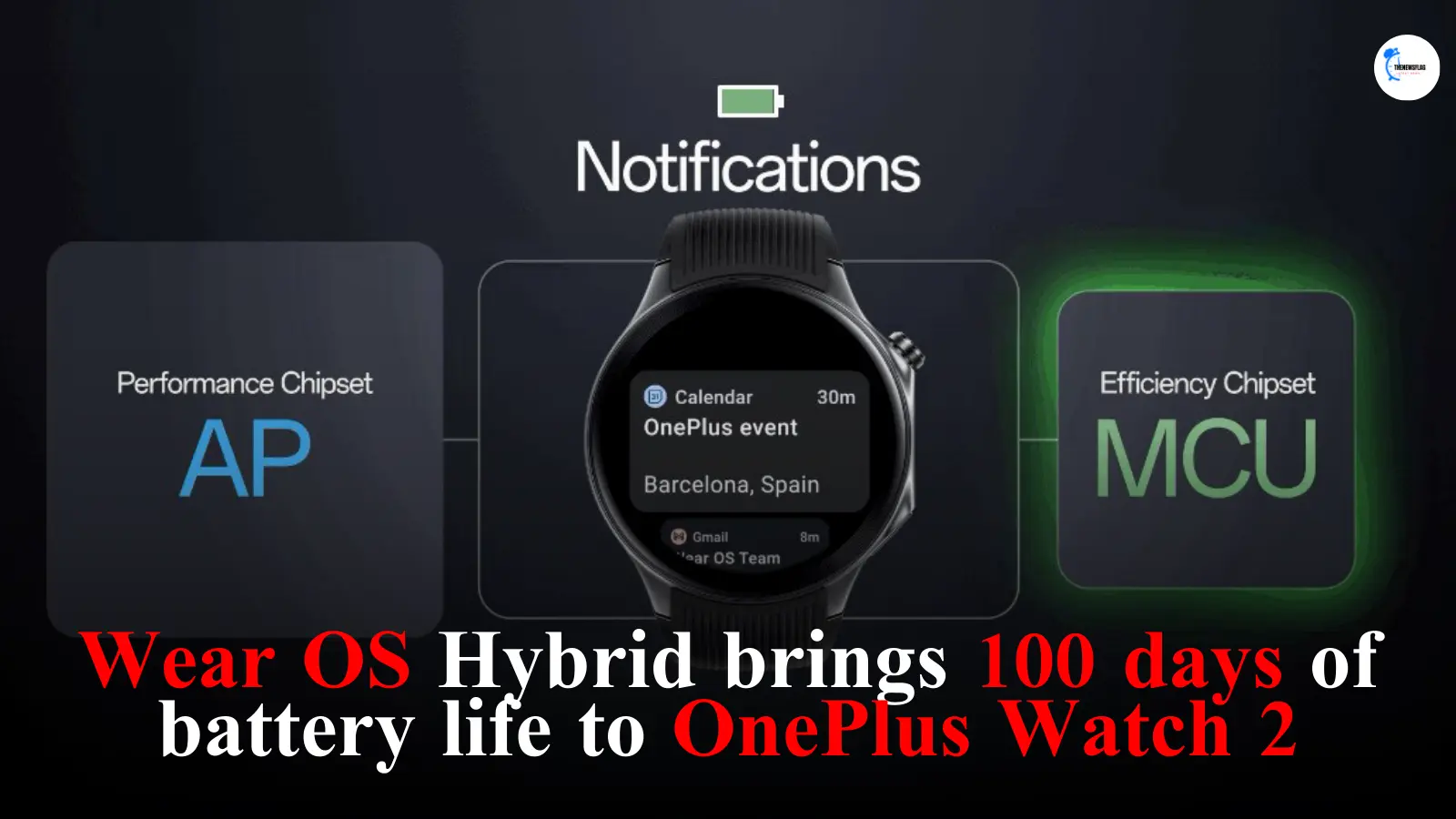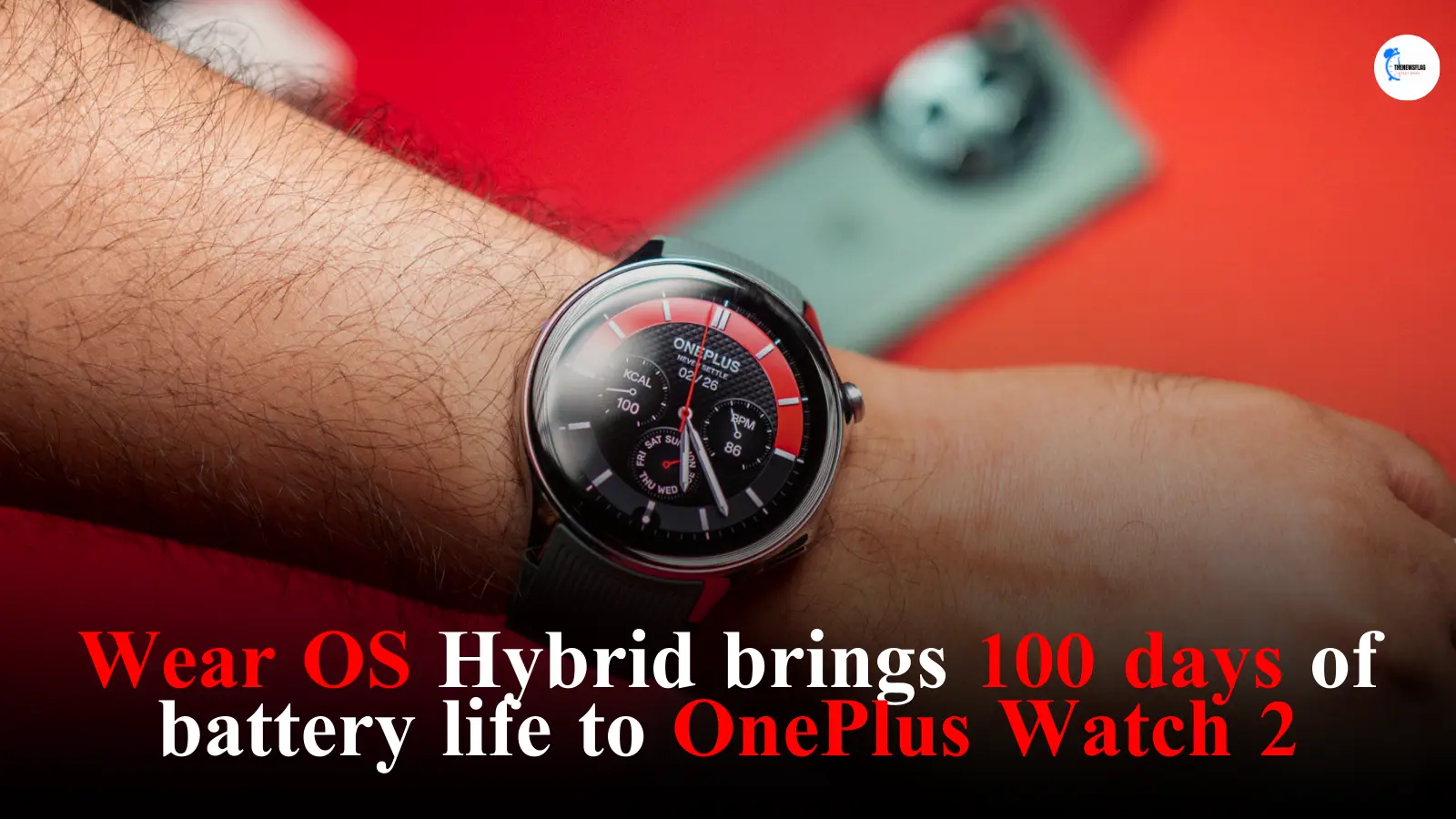Wear OS Hybrid brings 100 days battery life to OnePlus Watch 2: Smartwatches are small, powerful gadgets with a lot of functionality. But there’s always been a catch-22 for them. Their weight increases with battery capacity, but as the OS gets more complicated, so do their CPUs’ power requirements. The majority of smartwatches only last a few days. But what if we could combine the advantages of both scenarios? Launch the Hybrid Wear OS Interface.
Read Also: Asus VivoWatch 6 Launch Date in India: This Asus smartwatch spotted on Bluetooth SIG certification
How does the Wear OS Hybrid Interface work?
Over 100 hours can pass between Non-Wear OS watches like Garmin smartwatches. Days, not hours, were used to measure the battery life of Samsung’s initial Galaxy Watches, which ran on the company’s Tizen OS. Google’s attempt to address Wear OS’s long-standing battery life issue is the new Hybrid Interface.
In essence, the Wear OS Hybrid Interface is a software program that works with Wear OS to intelligently control the internal processors of smartwatches. A “dual-chipset architecture” is used by many contemporary Wear OS smartwatches, which consist of a low-power microcontroller unit (MCU) and a powerful main processor (Application Processor, or AP). Google’s technology facilitates the assignment of specific tasks to the low-power or high-power processor.
For a while now, Wear OS devices have been slowly moving towards this resolution. Low-power “co-processors” have been added to watches as auxiliary chips or integrated into system-on-a-chips (SoCs). The extra OS, which allows the hardware to put Wear OS to sleep while the watch isn’t in use, is what changes things here.
According to Google, “intelligent switching between the MCU or the AP is enabled by the Wear OS hybrid interface, allowing the AP to be suspended when not in use to preserve battery life.” For example, it enables more power-efficient experiences, such as sensor data processing on the MCU during the AP’s sleep cycle.

Wear OS devices have been gradually approaching this resolution for some time now. Low-power “co-processors” have been integrated into system-on-a-chips (SoCs) or added as auxiliary chips to timepieces. What makes a difference here is the additional OS, which enables the hardware to sleep Wear OS while the watch is not in use.
Google states that “intelligent switching between the MCU or the AP is enabled by the Wear OS hybrid interface, allowing the AP to be suspended when not in use to preserve battery life.” For instance, it makes experiences like processing sensor data on the MCU while the AP is sleeping more power-efficient.
On your phone, this is comparable to how Android functions. Android smartphones designate low-power cores on processors such as the Snapdragon 8 Gen 3 for basic activities. The power cores on the same chip are tasked with demanding tasks in the interim.
The transition takes place smoothly and effortlessly. It is not necessary to fiddle with power modes or make manual setup changes.
The fact that developers don’t need to modify their apps in any way to make them hybrid Wear OS compatible is even more awesome. Now, all of the labor and optimization is handled by Wear OS APIs. From the standpoint of a software developer, everything functions precisely as it did prior.
The watch manufacturer is currently accountable. The proper hardware must be utilized, and any manufacturer-customized software must follow the same guidelines.
Conclusion
We may anticipate a sharp increase in new smartwatches utilizing this technology shortly. If these models have the necessary hardware, even older ones might follow suit. Users place a high value on battery longevity, so it makes sense for manufacturers to incorporate any feature that extends it. By finding the ideal balance between functionality and battery life, Wear OS Hybrid technology has the potential to completely transform Android smartwatches and improve user experience.
___Read Also:






I deserve this one for free….hahaha
The integration of mobile technology with Wear OS watches is truly groundbreaking. Exciting times ahead for tech enthusiasts! Also, kudos for keeping us updated on the latest political news. It’s essential to stay informed.
I appreciate the insightful coverage of political news alongside tech updates. It’s crucial for us to engage in both spheres to understand the impact of technology on our political landscape. Looking forward to more in-depth analysis!
It’s refreshing to see a blend of mobile technology, watches, and politics in one article. The intersection of these topics reflects the interconnected nature of our modern world. Well done on presenting a diverse range of subjects!